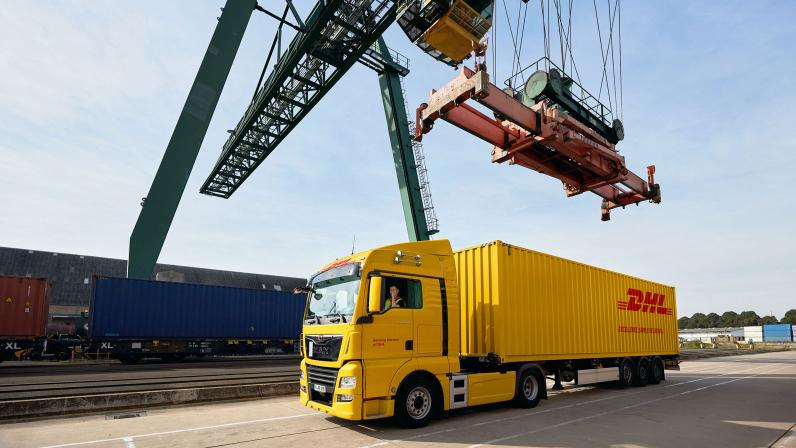
The DHL Group is aiming to grow revenue by 50% by 2030 through a series of initiatives across its various divisions. The company said its plan to grow its revenues compared with 2023 levels was based on the current complex and volatile market conditions that had resulted in companies
actively working to create more resilient supply chains. Chief executive Tobias Meyer said: “We are ideally positioned to seize growth opportunities in a rapidly changing world thanks to our well-balanced, diversified portfolio. We want to grow faster and more profitably while decarbonising our business.
“We will fortify our market-leading position in global logistics with a strong focus on quality and on servicing the needs of fast-growing industry segments.”
The company also revealed changes to its structure, with its eCommerce and Post & Parcel Germany divisions being spun off as standalone entities. This will help reduce complexity and support the growth ambitions.
“While the company’s management structure with its five divisions – Express, Global Forwarding/Freight, Supply Chain, eCommerce, and Post & Parcel Germany – is simple and clear, the underlying legal structure is much more complex and partially overlapping,” the company said. “The alignment intends to reduce complexity and create a more flexible and agile set-up.”
It added: “This technical measure is not intended to bring any changes in substance to the group‘s portfolio, wage and protection agreements, management responsibilities, or other legal commitments. It will take about one to two years to be implemented.”
Meanwhile, the revenue improvements are based around six key areas: life sciences and healthcare, new energy, geographic tailwinds, e-commerce, digital sales and sustainability.
For life sciences, DHL said the biopharma, cell & gene, and clinical trials market is expected to grow at a compound annual growth rate (CAGR) of more than 10% between 2023 and 2030, which is “significantly” above global GDP.
“DHL Group is strongly positioned to address structural shifts in the pharma market, which depends on specialized logistics solutions such as temperature-controlled frozen or cryogenic storage,” the company said.
On energy, the company said that the transformation of the renewable energy and auto-mobility sectors require dedicated logistics solutions such as handling windmill blades or battery energy storage systems.
For this sector, there is an expected CAGR of more than 15% between 2023 and 2030, offering “significant growth potential”.
On geographic tailwinds, DHL said it would “build on its strong global footprint and local expertise to double down on geographic tailwinds”.
“This addresses the profound shift in growth of trade lanes, diversification of global supply chains, and the needs of fast-growing companies around the world.”
The growing e-commerce market has been a growth diver for DHL over recent year and the company plans to enhance its footprint in the e-commerce market further by creating integrated offerings across its divisions, such as combined fulfillment and last-mile delivery.
The global e-commerce market is expected to grow at a CAGR of 7% until 2030, DHL said.
For digital sales, DHL Group expects digital sales capabilities to become a standard to “gain and retain customers”.
“Therefore, the Group will further expand its digital sales programme to create enhanced online transactions for the customers across the Group,” DHL said.
Sustainability also has a role to play in the group’s new strategy.
“As a global logistics company with the goal of decarbonising its business by 2050, DHL Group integrates sustainability into its existing strategic ‘three bottom lines’ framework as the fourth strategic bottom line named ‘Green Logistics of Choice’.
“The company aims to use its expertise to support customers in decarbonising their supply chains, thereby gaining shares in this evolving market. Corresponding initiatives include strategic partnerships and intensifying decarbonisation efforts to secure among other things a 30% blend of Sustainable Aviation Fuel (SAF) by 2030.”
Meyer added: “We take pride in maintaining the largest fleet of electric vehicles in the logistics industry and in achieving the highest share of SAF among all airlines globally in 2023.
“Investing in low emission logistics, which anticipate future market demand, will materialise into a competitive advantage as these transport solutions are becoming increasingly important to our customers.”
Read more https://www.aircargonews.net/business
